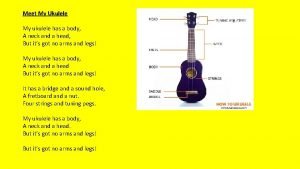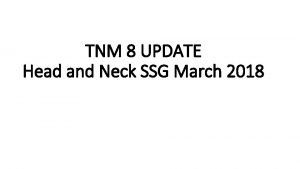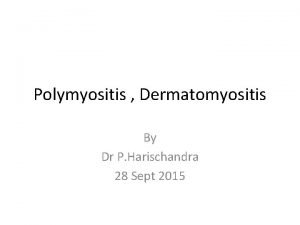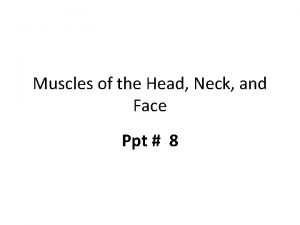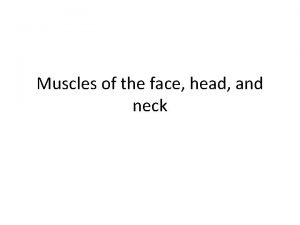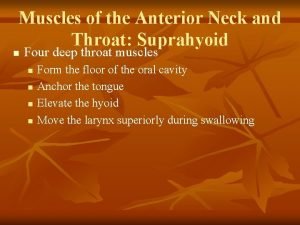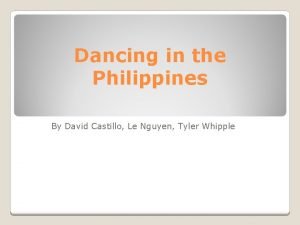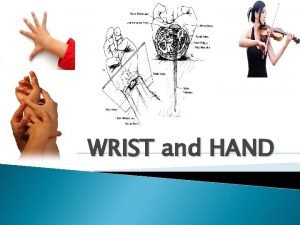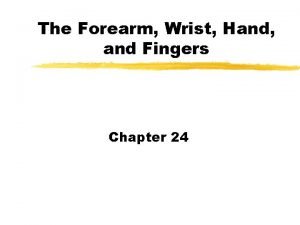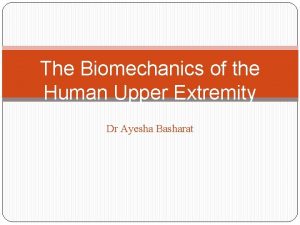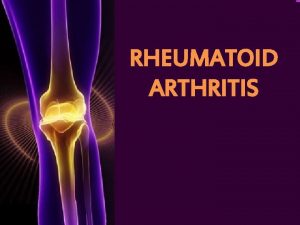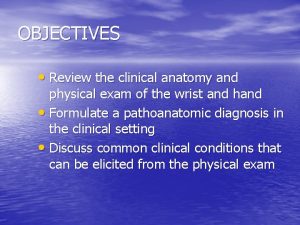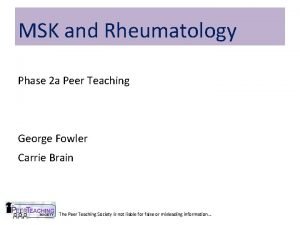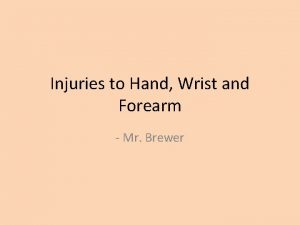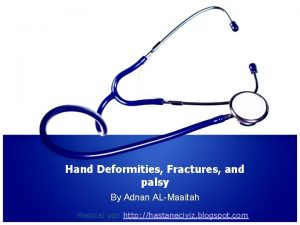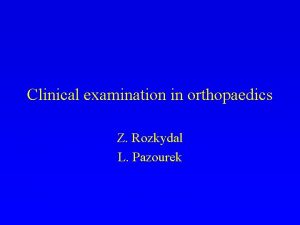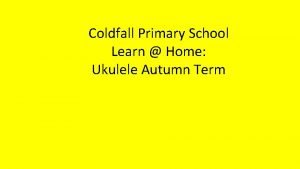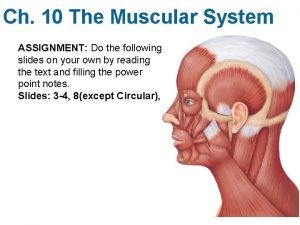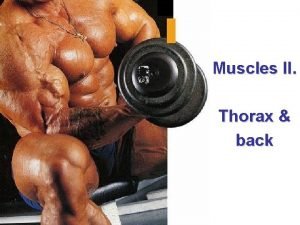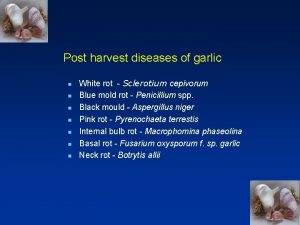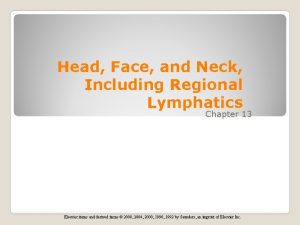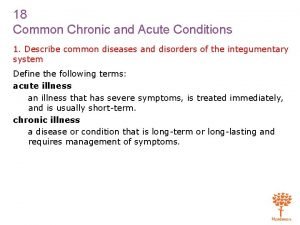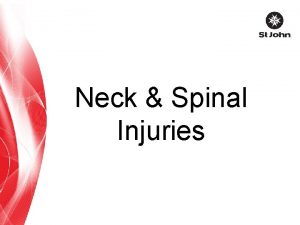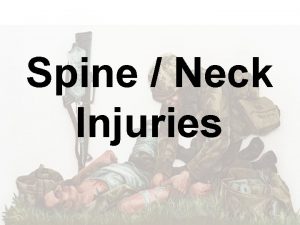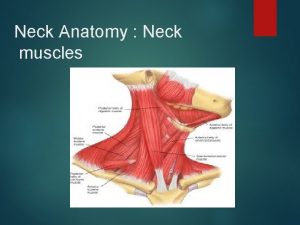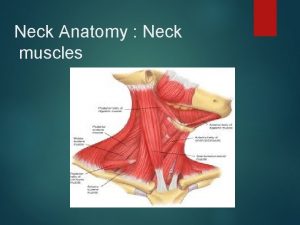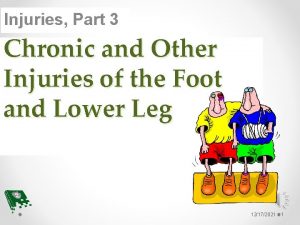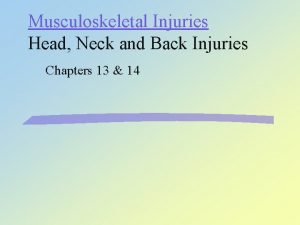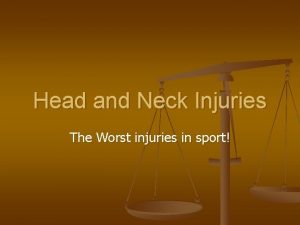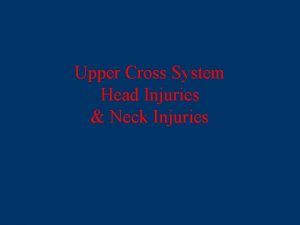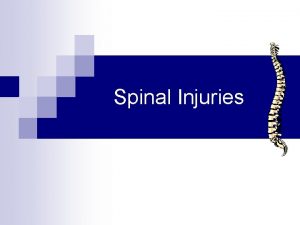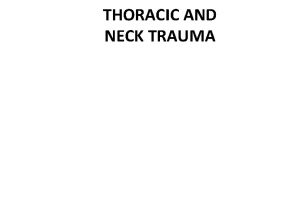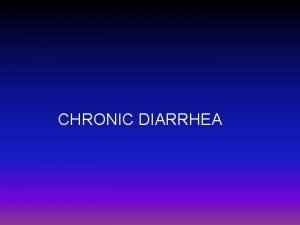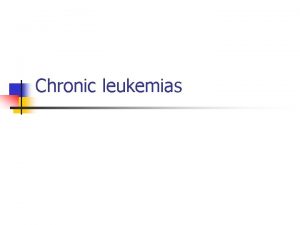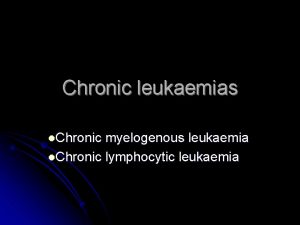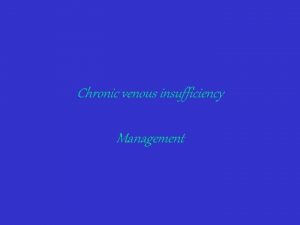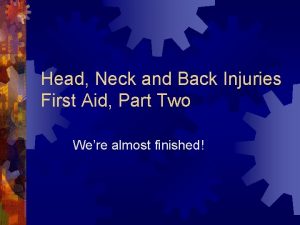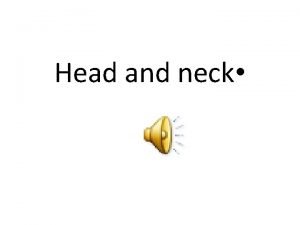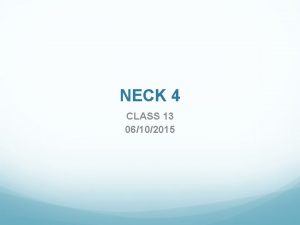Injuries Part 3 Chronic Injuries of Neck and

























- Slides: 25

Injuries, Part 3 Chronic Injuries of Neck and Spine

“Before & After” BELLWORK Using a piece of notebook paper, answer the following questions, leaving a line between each answer. Put the paper aside until the end of class. 1. How do you get a herniated disk? 2. What is a herniated disk? 3. What are symptoms of a herniated disk? 4. What is the treatment for a herniated disk?

Objectives Student will be able to: 1. Define and use terminology. 2. Differentiate between chronic injuries and their mechanisms, signs, symptoms and treatments.

TERMINOLOGY Ostephytes- outgrowth on a bone Disk bulge- disk moves out between the two vertebrae causing pinching of the disk Impinge- to come into contact with a nerve or disk causing a pinching action Transitory- not lasting, temporary Posterolateral- in the combined direction of posterior and later movements

Terminology Continued • Extrudes- to thrust out • Idiopathic- unknown cause

Think-Pair-List Think back to treatments for injuries that we have learned about and recorded on your Injury Tracker. Make a list with your neighbor. Share. PROPERTY OF PIMA COUNTY JTED, 2010

Spinal Stenosis Characterized by a narrowing of the spinal canal in the cervical region that can impinge the spinal cord

Spinal Stenosis Mechanism Either a congenital defect or development of bone spurs osteophytes or disc bulges

Spinal Stenosis Signs and Symptoms • Transient quadriplegia may occur from axial loading, hyperextension, or hyperflexion • Neck pain my be absent initially • Symptoms may be burning and tingling or associated motor weakness in the arms and legs • Complete recovery normally occurs within 10 -15 minutes

Spinal Stenosis Treatment • If athlete demonstrates transient quadriplegia the athletic trainer should use extreme caution initially • Athlete must have diagnostic test including xrays or MRI • If identified as having cervical spinal stenosis, athlete should be advised of the potential risks of continued participation • Physicians release is required to return to participation

http: //www. nlm. nih. gov/medlineplus/ency/imagepages/19527. htm

Cervical Disk Injury Mechanism Sustained, repetitive cervical loading during contact sports. The disk extrudes posterolaterally

Cervical Disk Injury Signs and Symptoms • Neck pain with some restriction in neck motion • Pain in upper extremity with associated functional weakness or sensory changes • Possible activation of EMS

Cervical Disk Injury Treatment • Rest and immobilization of the neck to decrease discomfort • Physician referral recommended • Cervical traction may also help reduce symptoms

http: //www. greatriverspineclinic. com/causes-of-back-pain/neck-pain/cervical-disk-herniation/

Low Back Pain Mechanism Either caused by a congenital or idiopathic defect.

Low Back Pain Signs and Symptoms • • Localized or diffused pain in the low back Low back muscles may be weak Range of motion for back may be painful Athlete may become discouraged with symptoms because they may last a long time

Low Back Pain Treatment • Dependent on athlete’s pain tolerance, he/she may continue with regular practice or be in complete rest • Alternating ice pack and heat pack (20 minutes) • Low back muscular stretching with athletic trainer • Athletic trainer teaches and demonstrates exercises the athlete should do at home

http: //www. anclotechiro. com/Low_Back_Pain. html

Herniated Disk Mechanism Develops from extruded posterolateral disk fragment or from degeneration of the disk Primary mechanism involves sustained, repetitive cervical loading during contact sports

Herniated Disk Signs and Symptoms • Neck or back pain • Pain may be restricted or diffused • Restriction in neck movement • At some point in the range of motion of the back and neck the herniated disk may become impinged causing extreme pain

Herniated Disk Treatment • Initial treatment involves rest and immobilization of the neck to decrease discomfort • If discomfort is in the lumbar area, rest and an immobilization brace may be helpful • Cervical traction may help reduce symptoms • If this conservative treatment does not help surgical intervention may be necessary


“What’s My Injury? ” • With a partner, choose an injury from today’s lesson • Write a creative scenario about that injury including the etiology, pathology, and treatment for the injury • Be prepared to share with the class

“Before & After” CLOSURE On your Before and After bellwork sheet, answer the following questions on the line below your “Before” answers. This will assess your new learning for the day! 1. How do you get a herniated disk? 2. What is a herniated disk? 3. What are symptoms of a herniated disk? 4. What is the treatment for a herniated disk?
 Shin body part
Shin body part Meet my ukulele song
Meet my ukulele song Tnm 8 head and neck
Tnm 8 head and neck Rash on upper chest and back
Rash on upper chest and back Face detection ppt
Face detection ppt Frontalis
Frontalis Front shoulder muscles
Front shoulder muscles Tinikling costume and props
Tinikling costume and props Flexor digitorum superficialis test
Flexor digitorum superficialis test Zhamate
Zhamate Humeroulnar joint
Humeroulnar joint Boutonniere and swan neck deformity
Boutonniere and swan neck deformity Rheumatoid nodules
Rheumatoid nodules Boutonniere and swan neck deformity
Boutonniere and swan neck deformity Nail pitting
Nail pitting Boutonniere and swan neck deformity
Boutonniere and swan neck deformity Boutonniere and swan neck deformity
Boutonniere and swan neck deformity Boutonniere and swan neck deformity
Boutonniere and swan neck deformity Risk factors of head and neck cancer
Risk factors of head and neck cancer Thumb brush strum
Thumb brush strum Muscular system head and neck
Muscular system head and neck Musculus intercostalis externus
Musculus intercostalis externus Causal organism of neck and bulb rot in garlic is _____
Causal organism of neck and bulb rot in garlic is _____ Regional write up head face and neck
Regional write up head face and neck Cardinal signs of inflammation
Cardinal signs of inflammation Common chronic and acute conditions chapter 18
Common chronic and acute conditions chapter 18

